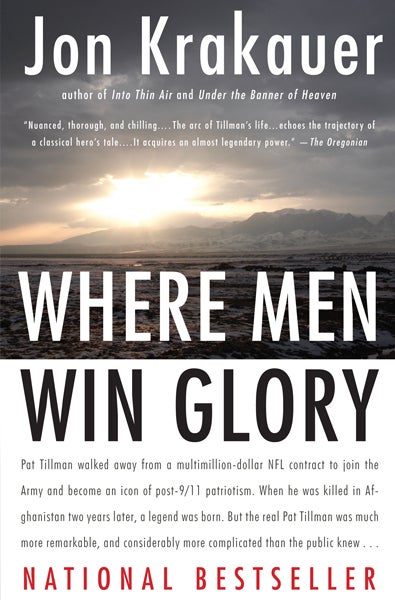
JRF's #19 - Where Men Win Glory by Jon Krakauer


 Horse Soldiers is a compelling story of how a small band of CIA and Special Forces troops forged alliances with Afghan warlords to push out Taliban forces in the days following the September 11th attacks.
I picked up this book based on the rave reviews I had read as well as my desire to have a greater insight into the lives of the Special Forces community of whom I minister to in Okinawa. Stanton does an excellent job of setting the scene in the days following September 11th.
Horse Soldiers is a compelling story of how a small band of CIA and Special Forces troops forged alliances with Afghan warlords to push out Taliban forces in the days following the September 11th attacks.
I picked up this book based on the rave reviews I had read as well as my desire to have a greater insight into the lives of the Special Forces community of whom I minister to in Okinawa. Stanton does an excellent job of setting the scene in the days following September 11th.
The first insight that I learned was how little America’s military knew about Afghanistan and how to best begin an assault. Thankfully, the CIA had some insight and preparation to this end.
The strategy of sending in just a handful of SF troops to partner with several Afghan warlords (who happened to be enemies of one another), and to get them cooperate and solidify the Northern Alliance in a common goal of defeating the Taliban, which turned out to be one of the most successful operations in our nations military history.
The title Horse Sodiers comes from the fact that the Northern Alliance troops, along with the SF guys, rode horses to battle and to various positions in the mountains of Afghanistan. In so doing, it was as one American General noted, “It’s as if the Jetsons met the Flintsones.” The strategy for the Americans was to call in various airstrikes against Taliban positions using GPS coordinates and laser markers… all while toting the equipment on mules and horses.
One very interesting side story throughout the book was the story of John Walker Lindh – the American teenager from California who had converted to Islam, traveled to Pakistan, and eventually joined forces with Taliban soldiers in Afghanistan. Through the book, Stanton traces Lindh’s journey and eventual capture by these same SF soldiers.
I would highly recommend this book to anyone interested in the history and current situation in Afghanistan. In the epilogue, the author gives the reader more insight on both the lives and eventual deaths in Iraq of many of the SF soldiers, as well as some unique and well informed recommendations to our ongoing battle in Afghanistan. At a bare minimum, any soldier, Airmen, or Marine stationed in Afghanistan should read this book, if for no other reason as to better understand what they’re fighting for.